Detailed description of the study
Interferons (IFNs) are high molecular weight proteins that have mainly nonspecific antiviral activity. These proteins are produced by white blood cells after activation by viruses, bacteria or specific polysaccharides, proteins and drugs. Interferons have the ability to block viral replication, preventing damage to body cells. IFNs belong to the class of cytokines—small protein molecules that are used in signaling between cells to trigger an immune response against foreign pathogens.
According to the type of receptor with which interferon is able to transmit a signal, they are divided into the first (I), second (II) and third (III) types.
Type 1 interferons include IFN-alpha, including 13 subtypes. All type I interferons bind to a single cell surface receptor, type I IFN. They stimulate the JAK-STAT pathway, triggering the expression of IFN-stimulated genes that are associated with the body's antiviral defense. They have high activity against tumors and viruses, and also exhibit immunomodulatory properties.
Type II interferons, including only gamma IFN, are cytokines that play a huge role in innate and acquired immunity. They are produced by activation of T cells, natural killer (NK) cells and macrophages in response to cytokine stimuli such as IL-12. They have a pronounced immunomodulatory property; protection against tumors and viruses is less pronounced.
Type III interferons include IFN-delta and are divided into four subtypes. The mechanism of their action has been little studied to this day. The interferon response is formed much faster than the body’s specific defense reactions - this is an important indicator of immunity.
Interferon status is a group of indicators that characterizes the functioning of nonspecific immunity (IFN system). Interferon status determines the activity, adequacy and functionality of the interferon system. The activity of this system is reflected by four indicators:
- IFN-alpha secretion level;
- IFN-gamma secretion level;
- Serum IFN secretion level;
- Level of spontaneous IFN secretion.
IFN-alpha and IFN-gamma are assessed using stress tests. To determine these indicators, a specific agent is introduced into the human body to induce the production of interferons. Spontaneous IFN is determined without a specific load. Serum IFN reflects the total IFN content in the blood serum.
Determining a person's interferon status is necessary for several purposes. First, to determine the ability of the immune system to reproduce an adequate immune response in the event of an infectious lesion. Secondly, control the production of interferons at the time of illness. Thirdly, select effective immunomodulatory therapy.
Today, interferon preparations are actively used in medicine. Interferons indirectly induce a cascade of reactions, as a result of which proteins are synthesized that provide active protection against tumors and viruses.
What reduces interferon gamma levels
The most important step in reversing elevated interferon gamma levels is to get medical help to identify and treat any underlying conditions that are causing the increase.
You may also want to try some complementary approaches if your doctor thinks they may be helpful for you.
A lifestyle change that will help you not only lower your IFN-gamma levels but also improve your overall health is to exercise more . Endurance training (not moderate exercise) helped reduce IFN-gamma levels in a clinical study of 30 healthy but sedentary men. ()
As mentioned earlier, IFN-gamma levels are elevated in alcoholics. Reducing your alcohol intake can not only reduce your levels of this interferon, but also protect you from the well-known harmful effects of alcohol. ()
A diet high in omega-3 fatty acids may also help reduce IFN-gamma levels, based on preliminary data in mice. Some foods high in omega-3s include fatty fish, shellfish, and fortified dairy products. ()
Some medications, dietary supplements, and substances that have reduced IFN-gamma levels in studies include:
- Fish fat ()
- Curcumin ()
- Olive leaf extract (, )
- Andrographis (34, )
- Boswellia ()
- Lithium()
- Theanine ()
- Glucosamine ()
- Ginkgo biloba ()
- Ginseng ()
- Theaflavins ()
- Nettle leaf ()
- EGCG (green tea) ()
- Aloe ()
- Resveratrol ()
- Simvastatin ()
- Pterostilbene()
- Zinc()
- Silymarin (milk thistle) ()
- Genistein ()
- Acetylcysteine NAC ()
- Ibuprofen ()
- Sulfasalazine ()
- Methotrexate ()
- Ozone ()
- Oxygen()
- Rutin()
- Vitamin D ()
- Dihydroquercetin (taxifolin) ()
- Aspirin ()
- Dimethyl fumarate ()
Talk to your doctor before taking any of these substances, and never use them as a substitute for standard treatments for your condition.
References
- Lifshits, V.M., Sidelnikova, V.I. Medical laboratory tests. - M.: Triad X, 2007. - 312 p.
- Nesterova, I.V. Congenital and acquired interferonopathies: differentiated approaches to interferon-corrective therapy, Federal State Autonomous Educational Institution of Higher Education "Russian Peoples' Friendship University" of the Ministry of Education and Science of the Russian Federation, Moscow, 2022. - V. 16(2). — P. 50-53.
- Savenkova, M.S., Karashtina, O.V., Shabat, M.B. and others. Interferon status and choice of interferon inducers in frequently ill children. - Children's infections, 2016. - No. 2. - P. 45-51.
Low interferon gamma levels
The diseases or conditions listed here are typically associated with low levels of interferon gamma, but this biomarker alone is not sufficient to make a diagnosis.
Possible causes of low interferon gamma values
- Endurance training (especially aerobic) as shown in a clinical study of 30 healthy men. ()
- Secondary exposure to cigarette smoke (study of 40 children) ()
- Candida albicans – oral cavity infection (study of 26 people) ()
- Physical trauma (study, 38 trauma patients) ()
- Heart surgery (study of 20 people) ()
- Epstein-Barr virus infection (, )
- Hepatitis C ()
- Treatment with corticosteroids (study of 131 patients with leprosy) ()
- Helicobacter pylori infection ()
Helicobacter pylori reduces cholesterol levels in infected gastric epithelial cells and thereby blocks interferon gamma signaling, allowing the bacteria to escape the inflammatory immune response. (source)
Structure [edit]
The IFNγ monomer consists of a core of six α-helices and an extensive unfolded sequence in the C-terminal region. [10] [11] This is shown in the structural models below. The α-helices in the core of the structure are numbered from 1 to 6.
Rice. 1.
Linear and cartoon representation of the IFNγ monomer. [eleven]
A biologically active dimer is formed by antiparallel blocking of two monomers, as shown below. In the cartoon model, one monomer is shown in red and the other in blue.
Rice. 2.
Linear and cartoon representation of an IFNγ dimer. [eleven]
Possible use in immunotherapy[edit]
Interferon gamma is not yet approved for the treatment of any cancer immunotherapy. However, improved survival was observed when interferon gamma was administered to patients with bladder cancer and melanoma. The most promising results were achieved in patients with stages 2 and 3 ovarian cancer. On the contrary, it was emphasized: “Interferon-γ secreted by CD8-positive lymphocytes activates PD-L1 on ovarian cancer cells and promotes tumor growth.” [30] in vitro
research on IFN-gamma in cancer cells is more extensive and results show antiproliferative activity of IFN-gamma, leading to inhibition of cell growth or death, usually induced apoptosis, but sometimes autophagy.
[20] In addition, mammalian glycosylation of recombinant human interferon gamma expressed in HEK293 has been reported to improve its therapeutic efficacy compared to the non-glycosylated form that is expressed in E. coli
. [31]
Production[edit]
Recombinant human interferon gamma, as an expensive biopharmaceutical, has been expressed in various expression systems, including prokaryotic, protozoan, fungal (yeast), plant, insect and mammalian cells. Human interferon gamma is commonly expressed in Escherichia coli
, marketed as ACTIMMUNE®, however, the resulting prokaryotic expression system product is not glycosylated with a short half-life in the bloodstream after injection;
The purification process of the bacterial expression system is also very expensive. Other expression systems, such as Pichia pastoris
, have not shown satisfactory results in terms of yield. [20] [21]
Hepatitis C therapy
Already since the 80s. last century, the use of interferons in the treatment of hepatitis C is the “gold standard of treatment.”
Until recently, monotherapy was carried out with alpha interferons; later they were replaced by more effective and safe pegylated interferons, that is, enhanced with polyethylene glycol, which made it possible to significantly increase the duration of action of interferon-containing drugs.
Interferon group drugs in the treatment of CH
Due to this, peginterferons (most often Pegasys or Pegintron) are used once a week. Clinical studies have proven that the body's immune response to chronic hepatitis C is much higher when using peginterferons compared to standard drugs of this type. The dosage of interferons for hepatitis C is presented in the table (Table 4).
Table 4 - Use of interferon-containing drugs
| Interferon type | Weekly dosage |
| Alpha-2a | Up to 6×IU (three times). |
| Alpha-2b | Up to 5×IU (three times). |
| PEGylated alpha-2a | 180 mcg (one time). |
| PEGylated alpha-2b | 1.0-1.5 mcg/kg (one time). |
| With albumin alpha-2b | 900 mcg (once every 14 days). |
It is worth saying that today monotherapy even with peginterferons is practically not practiced; these drugs are necessarily used in combination with drugs from other groups. In particular, the most commonly used regimen for the first and third genotypes of the virus is the use of interferon with ribavirin.
However, this scheme is considered outdated today, although such treatment is still practiced in our hospitals due to its affordable price. Traditional drugs are being replaced by new drugs Sofosbuvir, Daclatasvir, Ledipasvir and their generics.
However, it is not possible to completely abandon interferon in the treatment of hepatitis C, since its use significantly enhances the effect of new drugs. Therefore, new regimens have been developed, including, in addition to new drugs, also pegylated interferons. Modern treatment regimens for hepatitis C are as follows (Table 5).
Table 5 – Modern treatment regimens for hepatitis C using interferons
| Genotype | Therapy |
| 1b | Sofosbuvir + Ribavirin + Peginterferon (3 months) |
| 1b (with cirrhosis) | Sofosbuvir + Ribavirin + Peginterferon (3 months) |
| 3 | Sofosbuvir + Ribavirin + Peginterferon (6 months) |
| 3 (with cirrhosis) | Sofosbuvir + Ribavirin + Peginterferon (3 months) |
What can increase interferon gamma values?
The most important step if you have low interferon gamma levels is to see your doctor to identify and treat any conditions that may be causing low interferon levels.
You can also try additional approaches if your doctor decides they are helpful for you.
Unlike endurance exercise, moderate exercise may, conversely, increase IFN-gamma production (study of 16 healthy men). ()
exposure to sunlight promotes the release of nitric oxide , which in turn increases interferon gamma levels (clinical study of 24 healthy volunteers). ()
Therapeutic uses[edit]
Interferon-γ 1b is approved by the US Food and Drug Administration for the treatment of chronic granulomatous disease [22] and osteopetrosis. [23]
It has not been approved for the treatment of idiopathic pulmonary fibrosis (IPF). In 2002, the manufacturer InterMune issued a press release stating that phase III data demonstrated improved survival in IPF and a 70% reduction in mortality in patients with mild to moderate disease. The US Department of Justice said the release contained false and misleading statements. InterMune CEO Scott Harkonen was accused of falsifying a trial and was convicted of wire fraud in 2009 and sentenced to fines and community service. Harkonen appealed the verdict to the US Court of Appeals for the Ninth Circuit and lost. [24] Harkonen was fully pardoned on January 20, 2022. [25]
It is being studied at the Children's Hospital of Philadelphia for the treatment of Friedreich's ataxia. [26]
Although it has not been officially approved, interferon-γ has also been shown to be effective in treating patients with moderate to severe atopic dermatitis. [27] [28] [29]


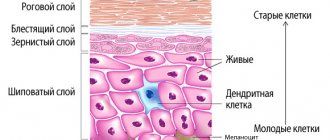
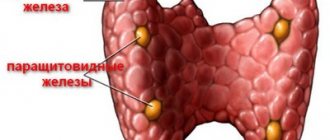
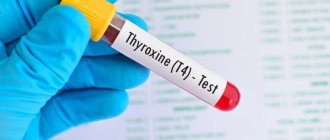
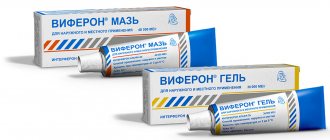
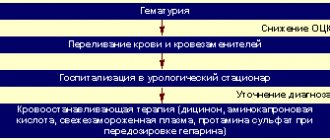
![Table 1. Comparative characteristics of the mechanisms of action of GABA, benzodiazepines and ROS [15–18]](https://laram-halal.ru/wp-content/uploads/tablica-1-sravnitelnaya-harakteristika-mehanizmov-dejstviya-gamk-benzodiazepinov-i-afk-330x140.jpg)

